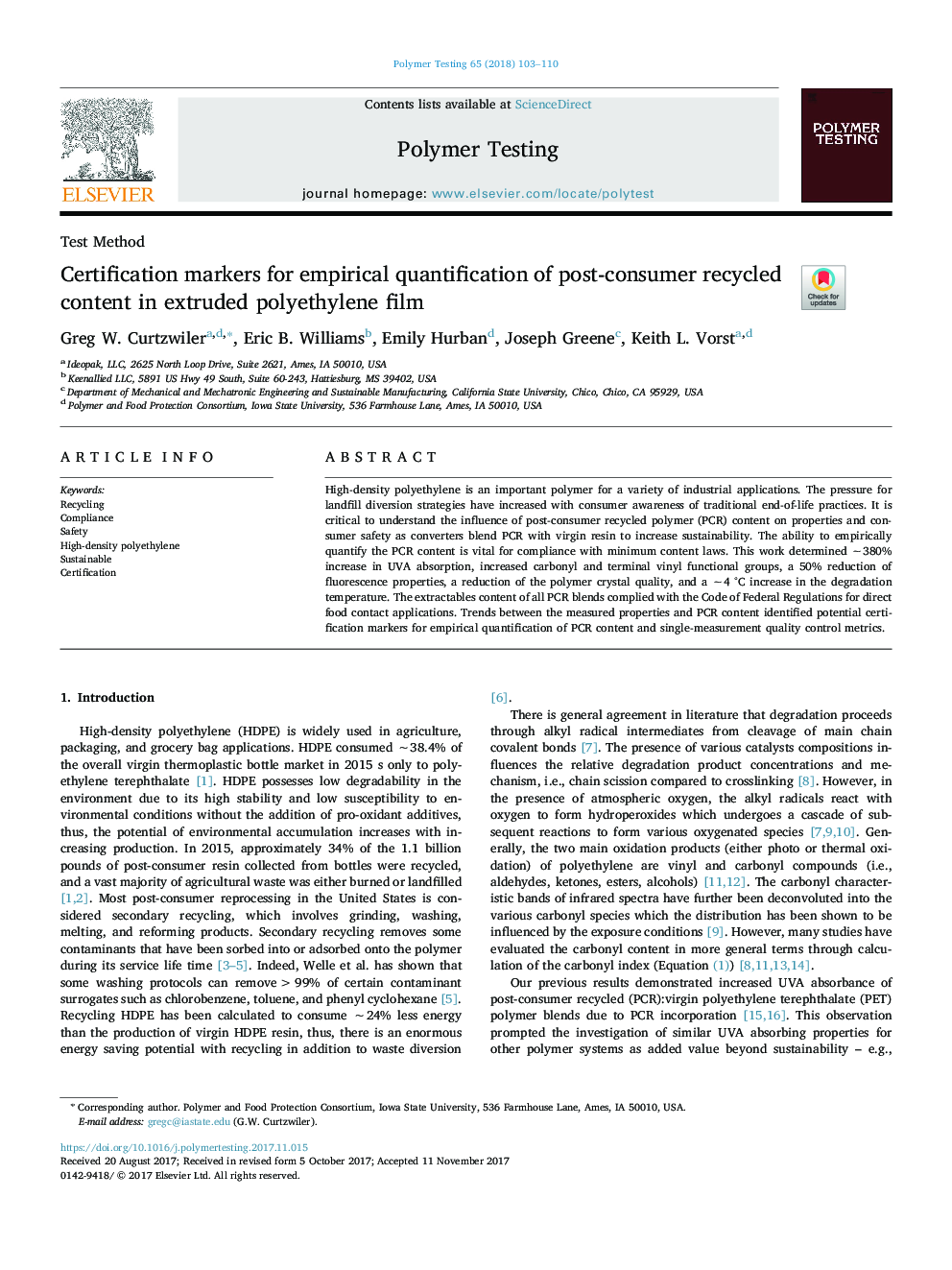| Article ID | Journal | Published Year | Pages | File Type |
|---|---|---|---|---|
| 7825361 | Polymer Testing | 2018 | 8 Pages |
Abstract
High-density polyethylene is an important polymer for a variety of industrial applications. The pressure for landfill diversion strategies have increased with consumer awareness of traditional end-of-life practices. It is critical to understand the influence of post-consumer recycled polymer (PCR) content on properties and consumer safety as converters blend PCR with virgin resin to increase sustainability. The ability to empirically quantify the PCR content is vital for compliance with minimum content laws. This work determined â¼380% increase in UVA absorption, increased carbonyl and terminal vinyl functional groups, a 50% reduction of fluorescence properties, a reduction of the polymer crystal quality, and a â¼4 °C increase in the degradation temperature. The extractables content of all PCR blends complied with the Code of Federal Regulations for direct food contact applications. Trends between the measured properties and PCR content identified potential certification markers for empirical quantification of PCR content and single-measurement quality control metrics.
Related Topics
Physical Sciences and Engineering
Chemistry
Organic Chemistry
Authors
Greg W. Curtzwiler, Eric B. Williams, Emily Hurban, Joseph Greene, Keith L. Vorst,
